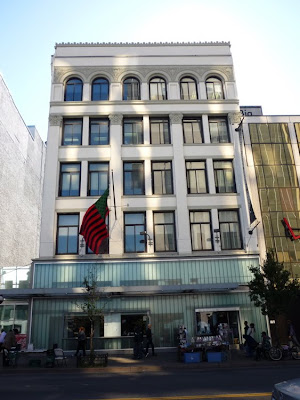Search This Blog
A strolling guide to New York City by writer and photographer Teri Tynes. Active during the years 2007-2021, Walking Off the Big Apple plans new walks away from the city in the summer of 2025.
Posts
Showing posts from September, 2009
Coming this summer 2025
A Hudson River Camino - a cultural and spirit-filled pilgrimage up river.
A Walk Through the Studio Museum in Harlem - Hurvin Anderson: Peter’s Series 2007-2009
- Get link
- X
- Other Apps
James Weldon Johnson's New York and Four Stops in Central Harlem
- Get link
- X
- Other Apps
Walking for Peace in Dag Hammarskjold Plaza
- Get link
- X
- Other Apps
Art "That Doesn't Even Exist": Dave Hickey Explains Ennui; and Upcoming Lectures on Art and Art Criticism
- Get link
- X
- Other Apps
An Art Walk in Chelsea for a Weekday Afternoon, and Places to Stay for the Night
- Get link
- X
- Other Apps
In New Amsterdam, the Half Moon Drops Anchor at the Battery, and Other Events of NY400 Week
- Get link
- X
- Other Apps
My Augmented New York Unreality: Google Street View's Eerie Portrait of a New York Past
- Get link
- X
- Other Apps
Fall Fashion 2009 Edition: Walking By the Yard in New York's Garment District, Crimes of Fashion, and Fall Fashion Trends
- Get link
- X
- Other Apps
Art Trips Up the Hudson: Day Excursions From New York City to Museums and Historic Sites
- Get link
- X
- Other Apps
June 11, 2025 in Beacon, NY

On a day trip from NYC









